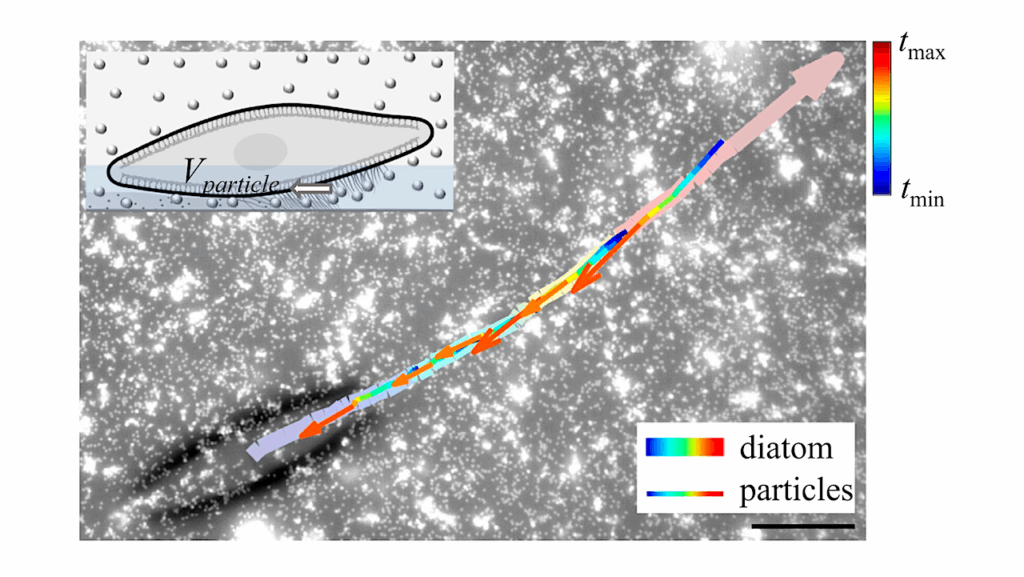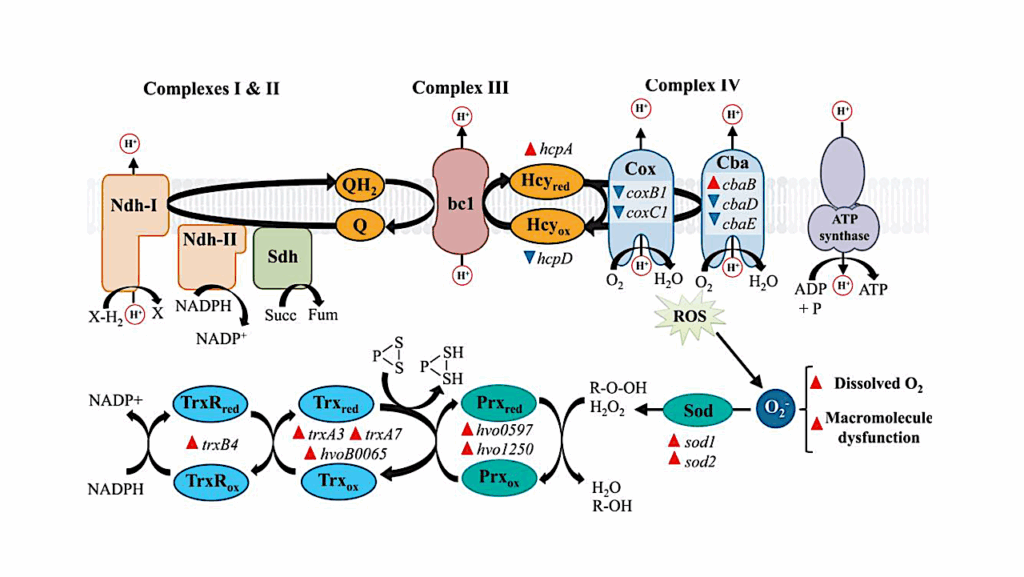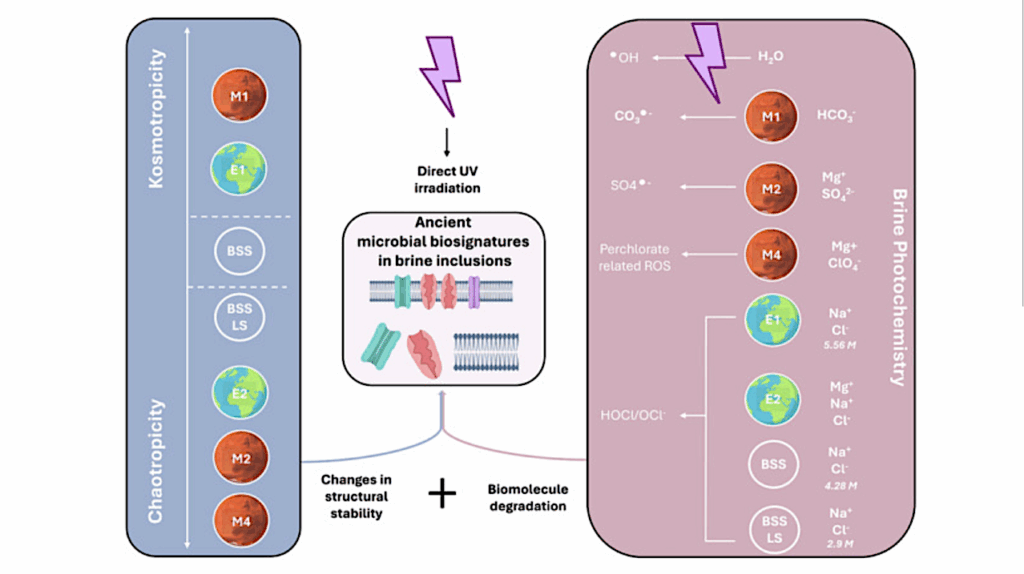Researchers Advance Knowledge Of Tardigrade’s Durability
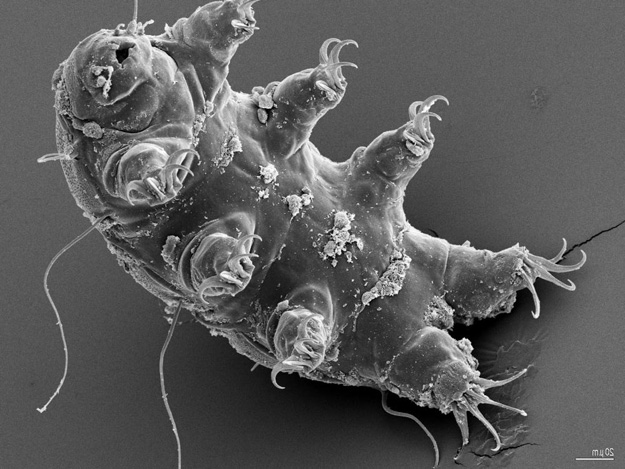
University of Wyoming researchers have gained further insight into the biological processes that allow microscopic creatures called tardigrades to survive extreme conditions, including being completely dried out in suspended animation for years.
Thomas Boothby, an assistant professor of molecular biology, and colleagues discovered how a sugar called trehalose works with proteins to allow tardigrades to survive a severe lack of water. Their research appears in the journal Communications Biology.
Measuring less than half a millimeter long, tardigrades — also known as water bears — can survive being completely dried out; being frozen to just above absolute zero (about minus 458 degrees Fahrenheit, when all molecular motion stops); heated to more than 300 degrees Fahrenheit; irradiated several thousand times beyond what a human could withstand; and even survive the vacuum of outer space.
Tardigrades’ ability to survive being dried out has puzzled scientists, as they do so in a manner that appears to differ from a number of other organisms with the ability to enter suspended animation. At one time, scientists thought tardigrades did not manufacture trehalose to survive drying up, but Boothby and his team found that they do produce the sugar — just at lower levels than other organisms.
The researchers also found that, in tardigrades, trehalose works synergistically with another tardigrade-specific protein called CAHS D.
Ultimately, Boothby and other researchers hope that their discoveries can be applied to help solve societal and global health issues — in this case, water scarcity. Their work might lead to better ways of stabilizing pharmaceuticals and generating engineered crops that can cope with harsh environments.
“A long-term goal of this field is to understand better how to confer the adaptation abilities of tardigrades to organisms that do not naturally survive drying,” Boothby says. “This study and its findings provide a compelling argument that to do so may require the combination of different, synergistic protectants.”
Trehalose and tardigrade CAHS proteins work synergistically to promote desiccation tolerance, Communications Biology (open access)
Astrobiology
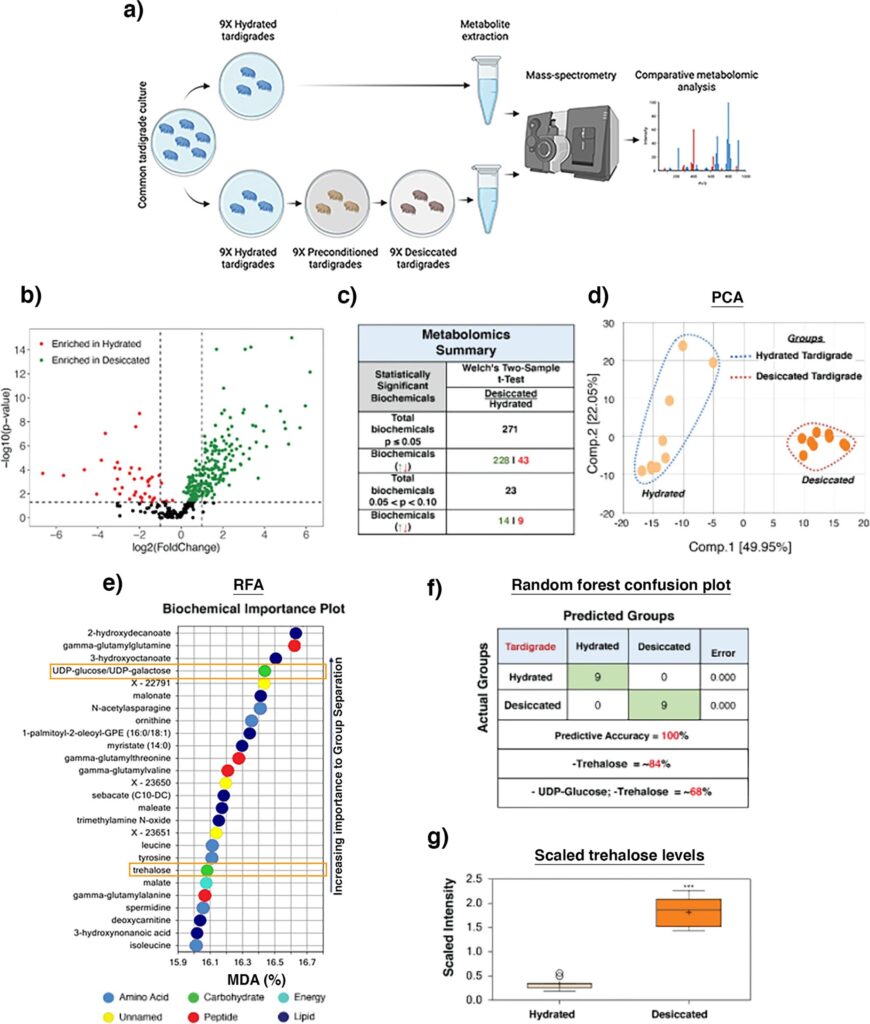
a) Schematic representing preparations of nine hydrated and nine preconditioned and desiccated tardigrade samples for metabolomics analysis. b) Volcano plot displays differential enrichment of metabolites with the change in hydration state of tardigrades. c) Summary table of the metabolome profiling comparing hydrated and desiccated tardigrade samples. Welch’s two-sample t-test used for statistical comparisons. d) PCA showed major separation by hydration status on Component 1, suggesting that desiccation causes a substantial metabolic shift in tardigrades. e) Random forest comparison between hydrated and desiccated groups in tardigrades identifies trehalose and trehalose precursor UDP-glucose as significant metabolites that contribute strongly to the group binning. The plot shows the mean decrease in binning accuracy that would result from the removal of a particular metabolite from our analysis. f) RFA confusion matrix showing that predictive accuracy within our dataset is 100%. g) Plot showing scaled intensity (relative metabolite abundance) for trehalose in hydrated and desiccated samples. n = 9, Welch’s two-sample t-test was used for statistical comparisons where *** indicates p-value < 0.001, error bars = standard deviation.



